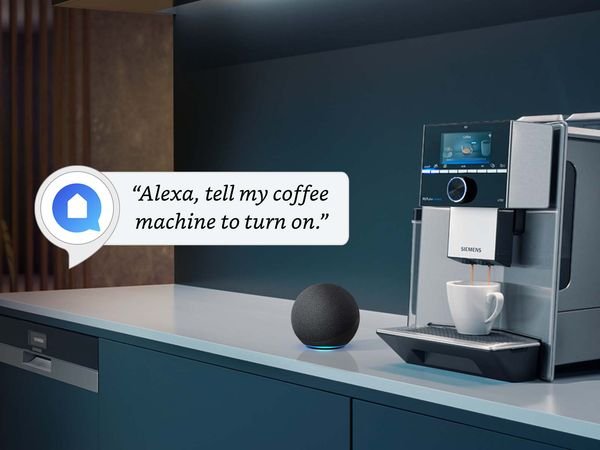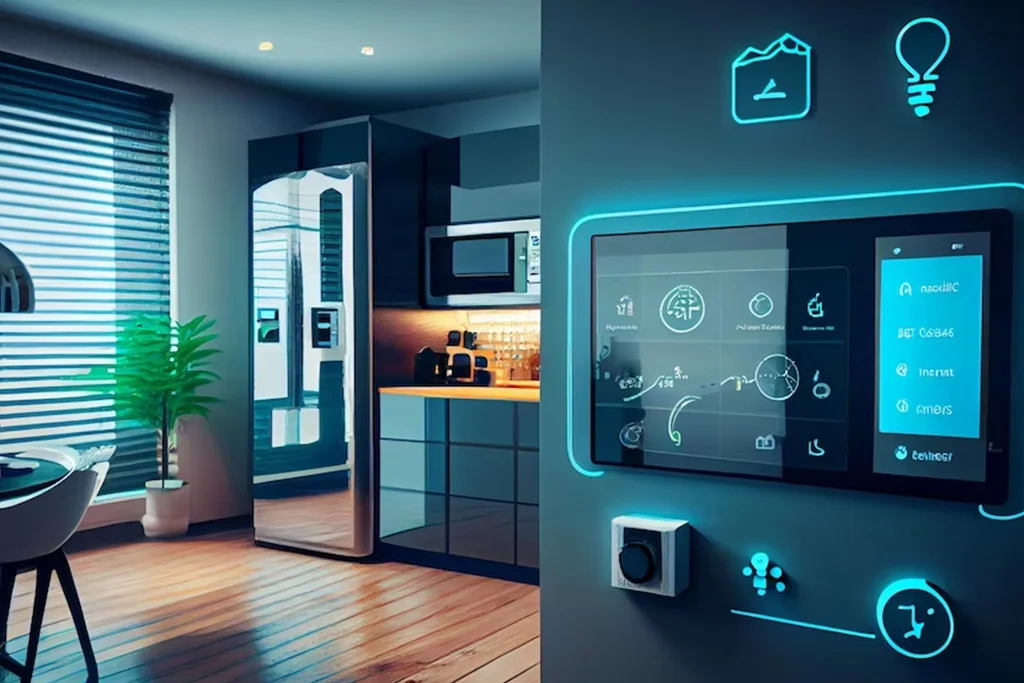Energy Efficient Smart Kitchen Gadgets – Revolutionizing Modern Kitchens
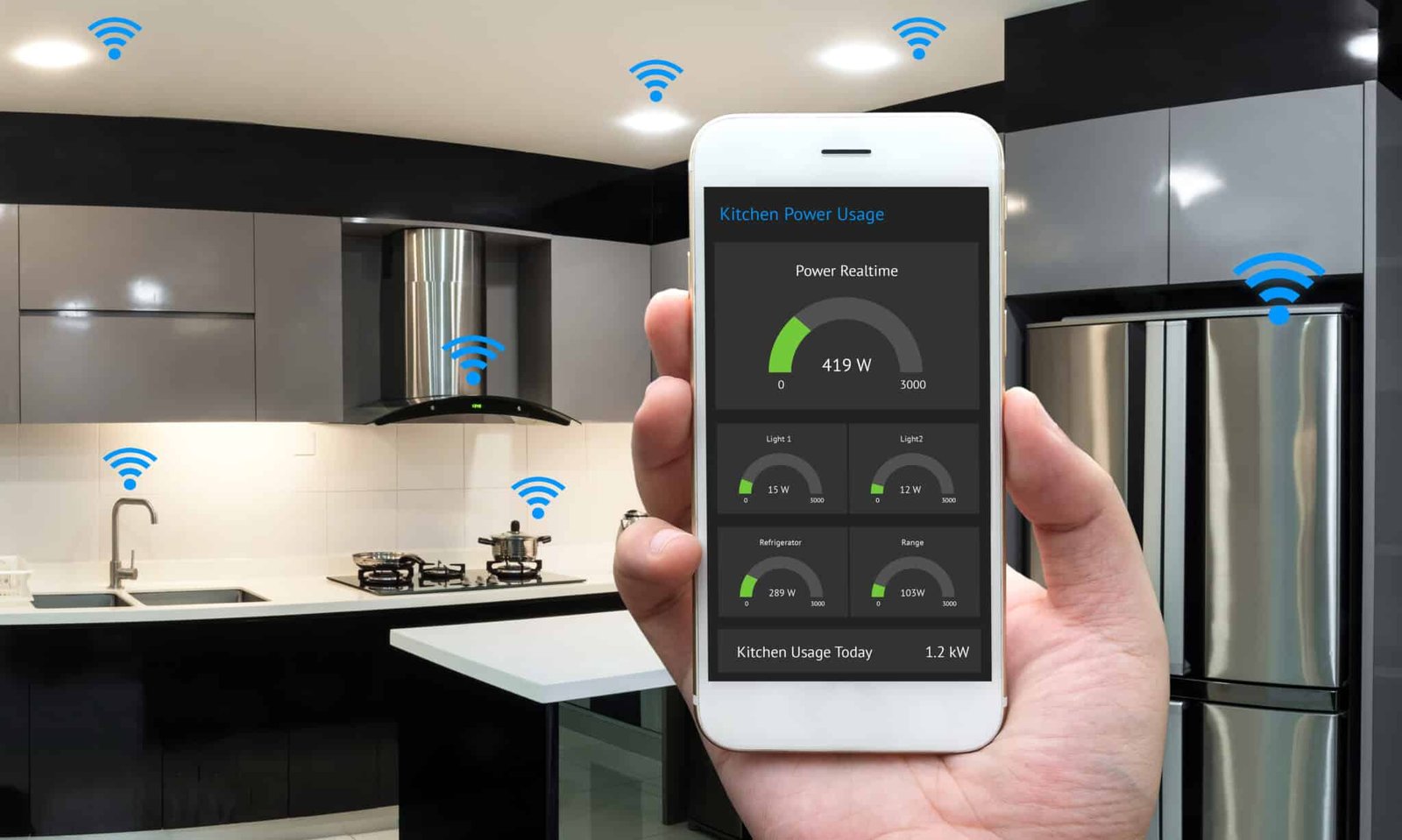
In recent years, the kitchen has transformed from a mere place for cooking into a hub of innovation and technology. Smart kitchens, equipped with advanced gadgets, offer unparalleled convenience and efficiency. A significant aspect of this technological revolution is the emphasis on energy efficiency.
With rising energy costs and growing environmental concerns, energy-efficient smart kitchen gadgets have become essential.
This article explores the various types of energy-efficient smart kitchen gadgets, their features, benefits, and how they contribute to a greener, more sustainable future.
Energy Efficiency in the Kitchen

Energy efficiency refers to the use of less energy to perform the same task, thereby reducing energy waste and lowering utility bills. In the context of smart kitchens, energy-efficient gadgets are designed to minimize energy consumption without compromising functionality.
These devices utilize cutting-edge technologies such as sensors, automation, and AI to optimize their operations.
The benefits of energy efficiency extend beyond cost savings; they include reduced carbon footprints, conservation of natural resources, and the promotion of a more sustainable lifestyle.
Key Categories of Energy-Efficient Smart Kitchen Gadgets
Energy-efficient smart kitchen gadgets span various categories, each offering unique features to enhance the cooking and dining experience while saving energy.
These categories include smart refrigerators, ovens, microwaves, dishwashers, coffee makers, kettles, lighting, plugs, and cooking appliances like slow cookers and air fryers. Let’s delve into each category and explore how they contribute to energy efficiency.
1. Smart Refrigerators
Smart refrigerators are among the most significant advancements in kitchen technology. These appliances come equipped with a range of energy-efficient features that make them an indispensable part of any modern kitchen.
One of the most notable features is the ability to maintain optimal temperature settings, which helps in preserving food for longer periods and reducing energy consumption.
For instance, many smart refrigerators have door sensors that alert users if the door is left open, preventing unnecessary energy loss. Additionally, they often come with smart cooling systems that adjust the internal temperature based on the contents and external conditions.
Some models even offer the capability to monitor and track food items, notifying users of expiration dates, which helps reduce food waste.
Examples of energy-efficient smart refrigerators include the LG InstaView Door-in-Door and the Samsung Family Hub. These models incorporate advanced technologies like Wi-Fi connectivity, voice control, and energy monitoring, allowing users to manage their refrigerator’s energy usage effectively.
The benefits of these refrigerators extend beyond energy savings, offering convenience and enhancing food safety.
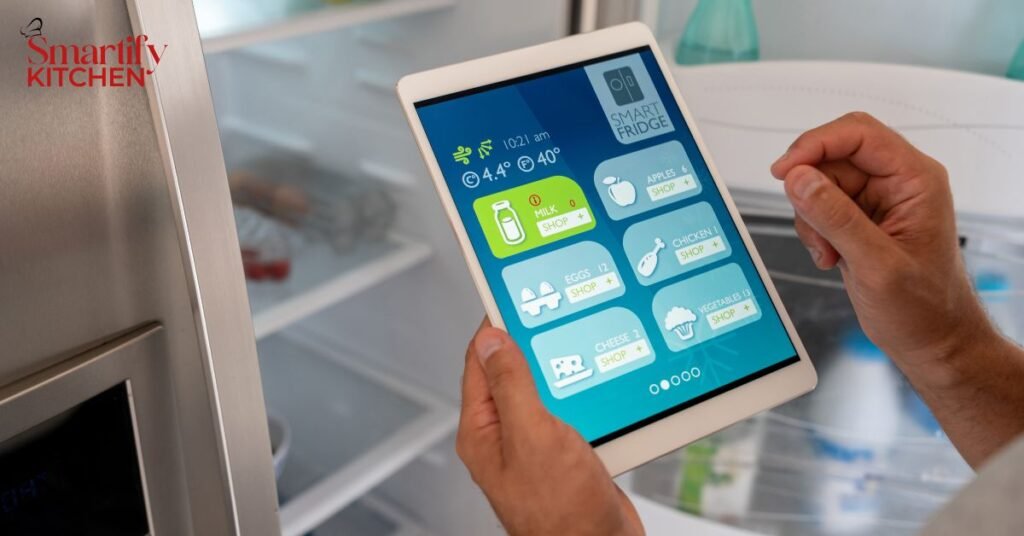
2. Smart Ovens and Microwaves
Smart ovens and microwaves have revolutionized the way we cook, providing precise cooking control and reducing energy waste. These appliances come with features like pre-programmed cooking modes, temperature sensors, and voice control, making them incredibly user-friendly and efficient.
One of the key energy-saving features of smart ovens is the use of sensors that detect the type and amount of food being cooked, adjusting the cooking time and temperature accordingly.
This precision not only ensures perfectly cooked meals but also reduces the energy used during the cooking process. Some models also offer remote control capabilities, allowing users to preheat the oven or start cooking from their smartphones, optimizing energy usage by aligning cooking times with meal schedules.
Popular models like the GE Profile Smart Oven and the June Oven exemplify these energy-efficient features. The GE Profile Smart Oven, for example, offers a scan-to-cook feature that automatically sets the optimal cooking time and temperature for packaged foods.
The June Oven uses a built-in camera and AI to identify food and suggest cooking settings, further enhancing energy efficiency.
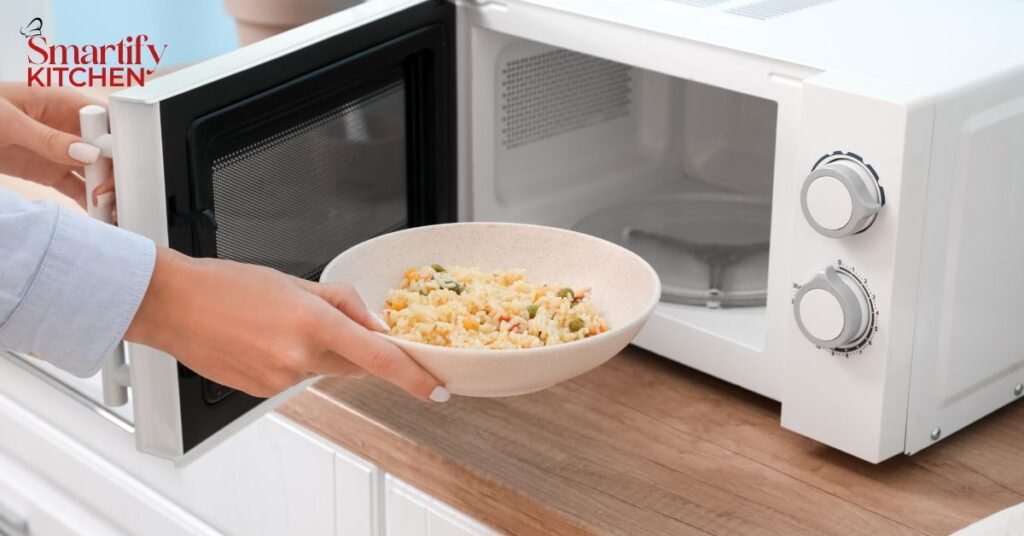
3. Smart Dishwashers
Dishwashers are essential kitchen appliances, and smart dishwashers take energy efficiency to the next level. These devices incorporate advanced technologies such as load sensing, eco-wash cycles, and smart water usage to minimize both water and electricity consumption.
Load sensing technology in smart dishwashers determines the size and soil level of the load, adjusting the water and energy usage accordingly. Eco-wash cycles are designed to use less water and energy, often at slightly lower temperatures, which is ideal for lightly soiled dishes.
Additionally, some smart dishwashers feature Wi-Fi connectivity, allowing users to start or schedule wash cycles remotely, ensuring that dishes are cleaned during off-peak energy hours.
Examples of energy-efficient smart dishwashers include the Bosch 800 Series and the Miele G 7000. The Bosch 800 Series offers a range of energy-saving features, including an EcoSilence motor and PrecisionWash system, which uses intelligent sensors to target the right amount of water and energy for each load.
The Miele G 7000’s AutoDos system automatically dispenses the correct amount of detergent, optimizing both water and energy use.
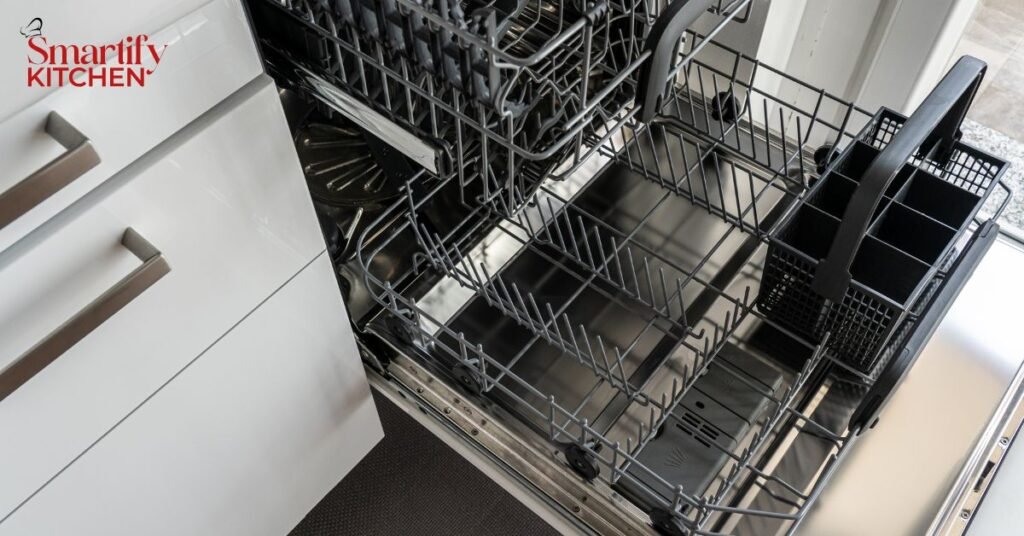
4. Smart Coffee Makers and Kettles
For many, a smart kitchen wouldn’t be complete without smart coffee makers and kettles. These appliances offer convenience and energy efficiency through features like scheduled brewing, temperature control, and remote operation.
Smart coffee makers can be programmed to brew coffee at specific times, ensuring that the machine is only on when needed. This scheduling feature helps reduce energy consumption by avoiding unnecessary operation.
Temperature control is another critical feature, allowing users to set the water temperature precisely, which can save energy compared to traditional coffee makers that heat water to boiling point regardless of the coffee type.
Smart kettles, like the iKettle 3.0, offer similar energy-saving features. They allow users to set specific temperatures for different types of teas and beverages, preventing unnecessary energy usage.
These devices can also be controlled remotely, so you can have hot water ready precisely when you need it.

5. Smart Lighting and Plugs
Smart lighting and plugs play a crucial role in creating an energy-efficient kitchen. Smart lighting systems, such as Philips Hue, offer features like motion sensors, dimming, and scheduling, which help reduce energy consumption.
For instance, motion sensors can automatically turn off lights when no one is in the kitchen, while dimming options allow for lower energy use during low-light periods.
Smart plugs, like the TP-Link Kasa Smart Plug, can transform traditional appliances into smart devices. These plugs allow users to control appliances remotely, set schedules, and monitor energy usage.
This feature is particularly useful for managing the energy consumption of devices that don’t have built-in smart features. By using smart plugs, you can ensure that appliances are turned off when not in use, further enhancing energy efficiency.
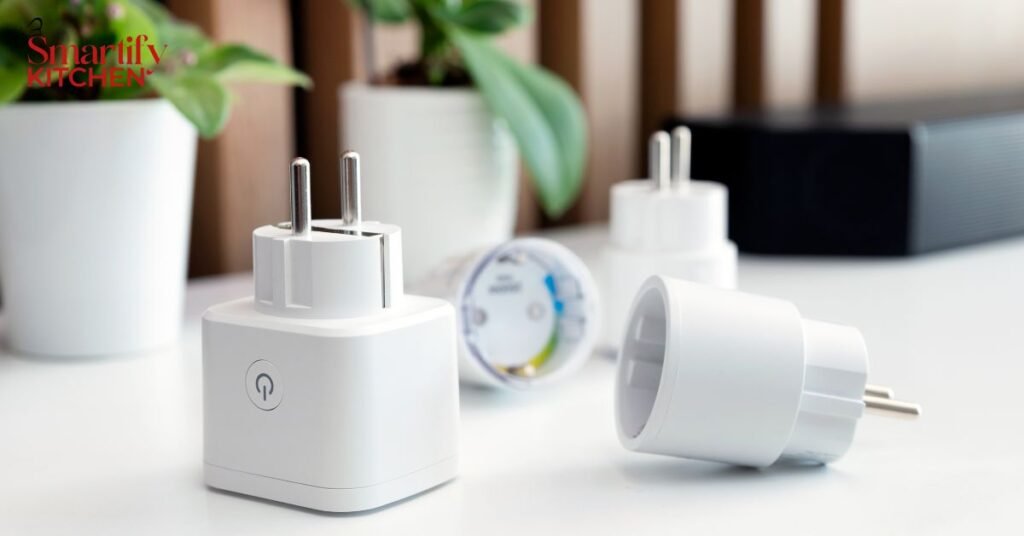
6. Smart Cooking Appliances (e.g., Slow Cookers, Air Fryers)
Smart cooking appliances like slow cookers and air fryers have become popular for their convenience and energy efficiency. These devices often come with programmable settings, remote control, and temperature monitoring, which help optimize cooking processes and reduce energy consumption.
Slow cookers, such as the Instant Pot Smart WiFi, offer programmable cooking modes and can be controlled via a smartphone app. This allows users to start cooking remotely and monitor the cooking process, ensuring that food is cooked efficiently and energy is not wasted.
Air fryers, like the Cosori Smart Air Fryer, use rapid air technology to cook food with less oil and energy compared to traditional frying methods.
These appliances often feature preset cooking programs that adjust the cooking time and temperature automatically, optimizing energy use.
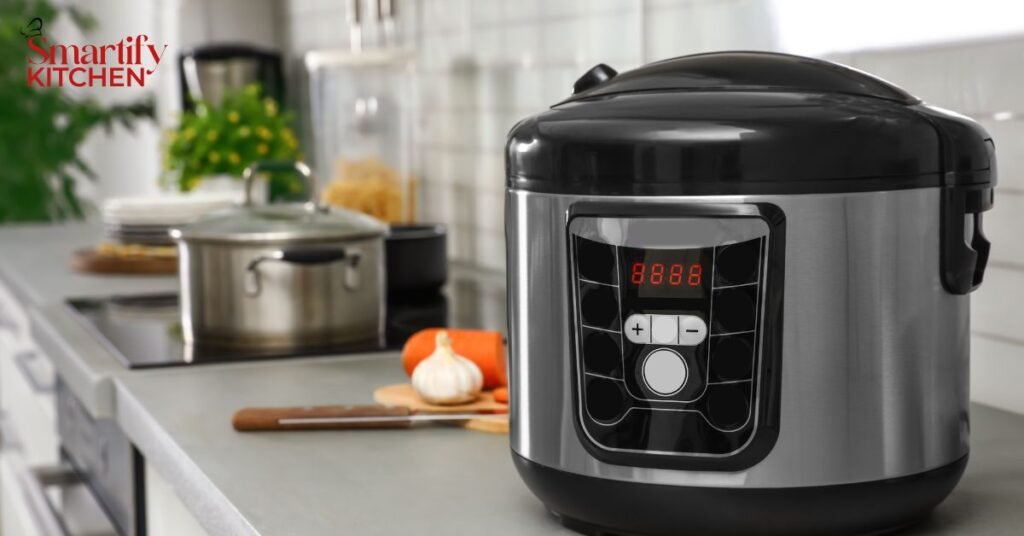
Integration with Smart Home Systems
Integrating smart kitchen gadgets with broader smart home systems can further enhance energy efficiency. Many smart kitchen devices are compatible with voice assistants like Amazon Alexa and Google Assistant, allowing for voice control and automation.
For example, you can use voice commands to turn off appliances, adjust temperature settings, or check the status of a cooking process.
Smart home systems can also include energy monitoring and management tools that track the energy consumption of all connected devices. This data can help users identify energy-saving opportunities and adjust their usage habits accordingly.
For instance, the Sense Energy Monitor can track the energy usage of individual appliances, providing insights into how to optimize energy consumption.
Tips for Maximizing Energy Efficiency in a Smart Kitchen
To maximize the benefits of energy-efficient smart kitchen gadgets, consider the following tips:
- Proper Usage and Maintenance: Regularly clean and maintain your appliances to ensure they operate efficiently. For example, clean refrigerator coils and replace filters in dishwashers and coffee makers.
- Selecting the Right Appliances: Choose appliances that fit your needs and household size. Larger appliances may consume more energy, so select appropriately sized models.
- Energy-Saving Routines and Schedules: Use scheduling features to run appliances during off-peak energy hours. For example, set your dishwasher or washing machine to run at night when energy demand is lower.
- Utilize Eco Modes: Many smart appliances come with eco modes that optimize energy and water usage. Use these settings whenever possible.
- Monitor Energy Usage: Use smart plugs and energy monitors to track the energy consumption of your devices. This information can help you identify energy-intensive appliances and adjust usage habits.
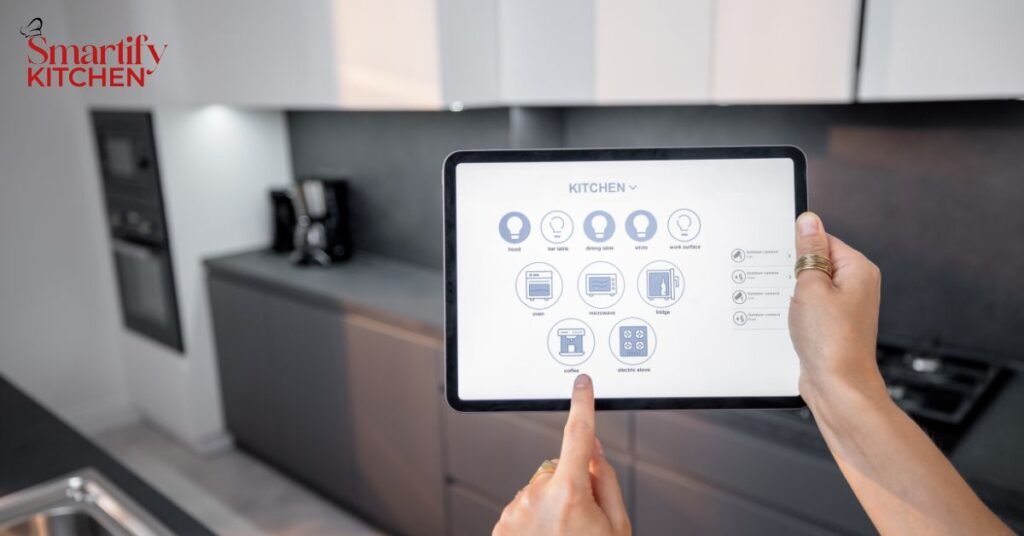
The Future of Energy-Efficient Smart Kitchen Gadgets
The future of energy-efficient smart kitchen gadgets looks promising, with ongoing advancements in AI, machine learning, and IoT technologies. Emerging trends include more advanced sensors, improved energy monitoring, and greater integration with renewable energy sources like solar panels.
Additionally, we can expect to see more appliances designed with sustainability in mind, using eco-friendly materials and energy-efficient components.
As smart kitchens continue to evolve, the focus on energy efficiency will only grow stronger. The development of smarter, more efficient appliances will play a crucial role in reducing household energy consumption and promoting a more sustainable lifestyle.
Also Read: Smart Kitchen Technology Trends 2024
Conclusion
Energy-efficient smart kitchen gadgets offer a multitude of benefits, from reducing energy consumption and lowering utility bills to enhancing convenience and sustainability.
By integrating these advanced devices into your kitchen, you can enjoy a more efficient and environmentally friendly cooking experience. As technology continues to advance, the possibilities for smart kitchens will expand, offering even greater opportunities for energy savings and sustainability.
Investing in energy-efficient smart kitchen gadgets is a step towards a greener future, and it’s a choice that benefits both the environment and your wallet.

